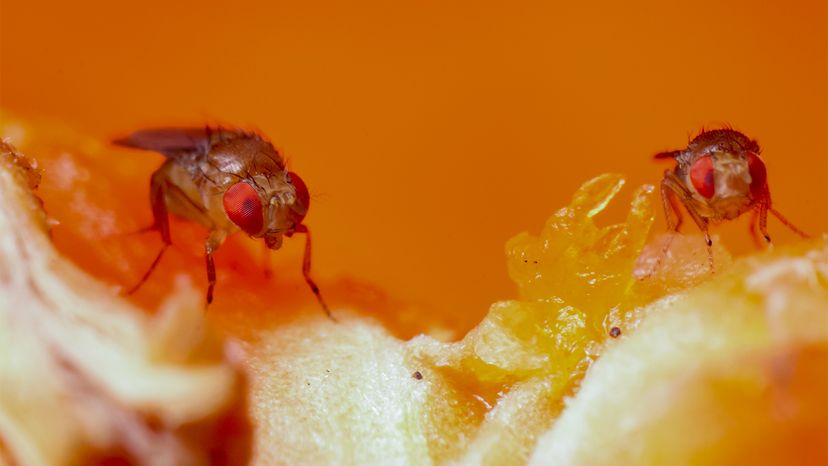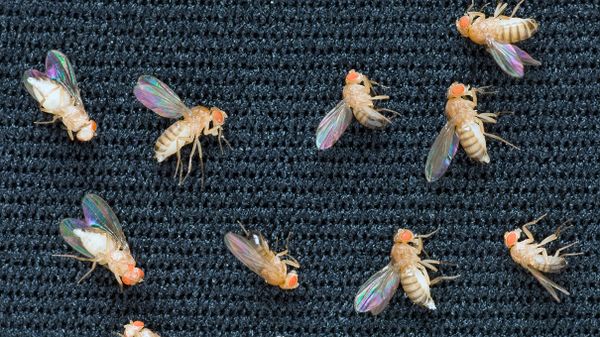Fruit flies have been used in biological studies for a long time, which means there are a lot of tools and resources for scientists using Drosophila melanogaster to ask interesting questions. But there are some specific reasons this species has always been a darling of geneticists.
For starters, in genetics it's helpful to have research subjects that can cycle through generations rather quickly, and fruit flies are great at that.
"Fruit flies create a new generation in about two weeks, making breeding them in the lab simple," says Thomas Merritt, Ph.D., professor in the department of chemistry and biochemistry at Laurentian University in Ontario, Canada, by email. "They're also small and easy to rear and care for, and it's easy to house as many of them as you need in a single lab at one time."
Also, fruit flies are also surprisingly similar to humans and other vertebrates. Drosophila melanogaster has 14,000 genes and we humans have somewhere between 20,000 and 25,000, and about 8,000 of our genes are analogous. Similarly, most fruit fly biochemistry is the same or similar to ours.
"Fruit flies are great to work on if you are interested in variation between individuals or genetic lineages," says Merritt. "They're also a great system if you are interested in experimentally altering the environment — they are so small we can do things like keep thousands of flies at different temperatures to see how temperature changes metabolism or gene activity. In one study in my lab, we use a small conveyor belt to slowly turn the vials we keep the flies in. This simple instrument is essentially a fly treadmill and we can get literally hundreds of flies exercising on a small desktop."



